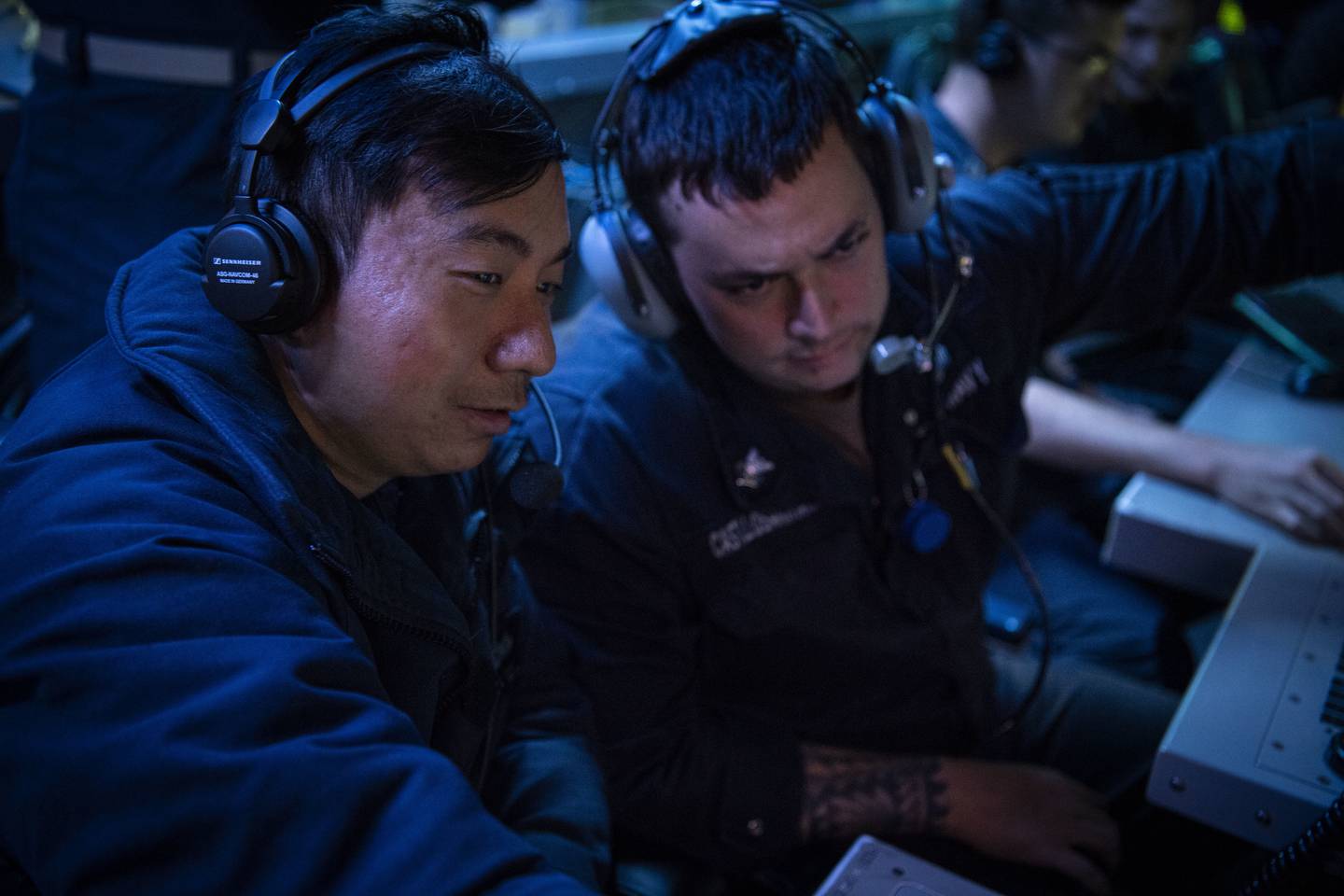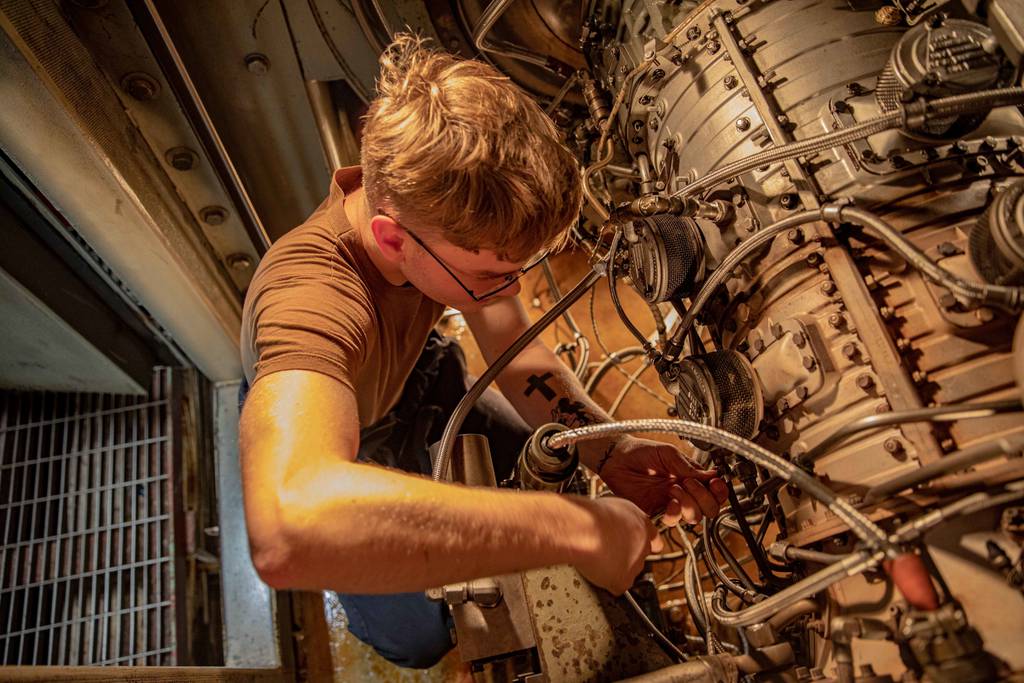WASHINGTON — The U.S. Navy is increasingly turning to data to help it put the right sailors in the right jobs in a bid to bolster ship readiness, according to the head of the surface navy.
The surface navy is taking two big steps in the second phase of its Surface Manning Experience, or SURFMEX, pilot program. After working with an initial set of six ratings to assign “value” to different kinds of on-the-job training and proficiency within those communities, the Navy is in the early stages of detailing sailors to their next assignments based on where the SURFMEX tools say they could best contribute to ship readiness.
And, with those first six ratings validated, the surface navy will begin work on another 12 ratings to try to expand the scope of SURFMEX, Commander of Naval Surface Forces Vice Adm. Roy Kitchener told Defense News in an interview.
In recent years, the Navy has aimed for a 92/95 fit/fill metric for deploying surface ships. Under that approach, 95% of billets are filled, and 92% are filled with someone of the correct pay grade and occupational specialty.
“I’m convinced that’s not the right metric,” Kitchener told Defense News. “We need to be able to measure experience and proficiency” and assign sailors to jobs with that in mind.
Before SURFMEX, the Navy risked assigning a sailor to a ship with unfamiliar equipment. If an Aegis Fire Controlman made their first deployment on an older destroyer with an older Aegis Combat System baseline, the current personnel system could assign them to a new destroyer with a much more sophisticated configuration.
This sailor could be asked to attend months of school to learn the new baseline — but they’d still be in an assignment where they have no on-the-job experience with that version of the combat system and therefore less ability to troubleshoot during maintenance, for example.
Another example of the pitfalls of relying on 92/95 fit/fill instead of SURFMEX, Kitchener said, is a forward-deployed cruiser that, on paper, should have been performing well. It had three “top snipes” — or senior engineering sailors who have gone to school for an additional credential — but still had a poorly performing engineering department.
After taking a closer look at the individuals and their experience, Kitchener said his staff found all three of those chief petty officers had just come from non-engineering-related ashore billets, meaning they were out of practice.
“They had a school that gave them [a Navy Enlisted Classification code], but they didn’t have the experience, and quite frankly they didn’t have any recent experience. And so they were ill equipped to help that ship out of the [readiness] trench it was in coming out of the maintenance phase,” Kitchener said, noting that wrapping up a maintenance availability and transitioning into basic training can be a particularly fraught time for a ship crew.
The SURFMEX system would never have let that happen, he said. It would have ensured at least one or two of those chiefs “came from shore duty that was engineering related — they were in an engine shop or [a regional maintenance center] — so they can come in and be big contributors and lead those apprentice sailors” who themselves are trying to build up their on-the-job training and need a mentor to guide them.

After the Navy assigned value to experience and training within the first six ratings — sonar technician, Aegis fire controlman, gas turbine systems technician (electrical and mechanical), quartermaster and engineman — it looked at how well Navy detailers in Millington, Tenn., were assigning sailors to jobs compared to how SURFMEX would assign them.
“Did that detailer send them to the right place, based on their experience and proficiency? Did [the sailor] go to the right ship that was in need of that skill set with the right experience and proficiency? And we found that in most cases, no, they were not doing that. And we have some pretty good, definitive information that illustrates that,” Kitchener said.
“The big next step is that we’re actually going to use it in the detailing marketplace,” he added. “Now, when these rates come up and these jobs are advertised for these rates on these ships, we will be using the SURFMEX data that we’ve collected to take that sailor and place them into the right job.”
The service will then “measure that effectiveness” while the ships are on deployment, Kitchener said.
His spokesman, Cmdr. Arlo Abrahamson, told Defense News “beta tests began with most recent arrivals for the Bush [Carrier Strike Group] ships and will have even more impact for upcoming deployments for Nimitz and Ford CSGs.
“Additionally, both [Naval Surface Force Atlantic] and [Naval Surface Force Pacific] are now using SURFMEX tools to evaluate when, if and who needs to be added to cruiser/destroyer deployers outside of normal [permanent change of station] detailing practices,” he continued.
During an Aug. 18 keynote speech at a Surface Navy Association conference in San Diego, Kitchener acknowledged the SURFMEX program doesn’t increase manning, an ongoing challenge the service is trying to address.
In recent years, the Navy has pulled sailors from ships in maintenance to put onto ships about to deploy. This approach adds significant risk to the maintenance ships, while creating some benefit to the deploying ship but creating a last-minute team that doesn’t necessarily work well together. Kitchener has said he wants to use SURFMEX to get away from this habit, though in the short-term that may mean deploying ships with open billets.
“We’ve got to stop doing all these rip-to-fills. Will we stop it completely? No. I can tell you that that’s not going to happen. But what we think we can do is we can reduce it,” he told sailors at the conference.
How SURFMEX will affect sailors
In the short-term, through the MyNavy Assignments system, SURFMEX is providing graded recommendations for where a sailor would have the greatest impact.
“For instance, a sailor with previous equipment and platform experience returning to the same platform would be an ‘A’ match, or a ‘B’ match for a similar platform,” Abrahamson said. “The greater the difference between the sailor’s prior experience and the possible billet assignment, the lower their score becomes, with the worst grade being an ‘F.’”
Naval Surface Force Pacific and Naval Surface Force Atlantic will also use SURFMEX to select sailors for temporary duties, ensuring the right experience set is being targeted and that the “gaining” and “donating” units’ readiness is factored into the decision.

Kitchener said the Navy will have to do some data analysis before reaching full implementation. Did this beta test actually lead to better operational availability of ships and their systems? Were there fewer casualties on ships? Can the Navy further refine the “values” associated with various kinds of training and experience to create even better-performing crews?
“It’s still a little bit of a journey of learning through a couple of [detailing] cycles. So I think what we’ll have by next year is, we’ll have gone through a strike group that’s gone through the process where we can truly measure some of the output and the results of putting those people in those places,” the vice admiral said.
He said it will be an iterative process. The aviation community is several years ahead of the surface navy with its Aviation Maintenance Experience, which Kitchener said took about five years to refine. Several data experts behind AMEX have joined the SURFMEX effort, and Kitchener said he expects that to help speed the process.
The next dozen ratings being evaluated include the remainder of the occupational specialties critical in putting a ship back together after a major maintenance availability — damage controlman, electrician’s mate, machinist’s mate, electronics technician and more — as well as some operational billets that are “the foundation of what a ship needs on deployment or to sustain itself in a fight,” including operations specialist, fire controlman, gunner’s mate and others within a watch section, according to the admiral.
Kitchener said it will take time before SURFMEX starts improving ship readiness rates, but it’s an important step in moving away from the 92/95 approach.
Today, he said, “it’s just pay band and rate, and it’s just not working.”
Megan Eckstein is the naval warfare reporter at Defense News. She has covered military news since 2009, with a focus on U.S. Navy and Marine Corps operations, acquisition programs and budgets. She has reported from four geographic fleets and is happiest when she’s filing stories from a ship. Megan is a University of Maryland alumna.








